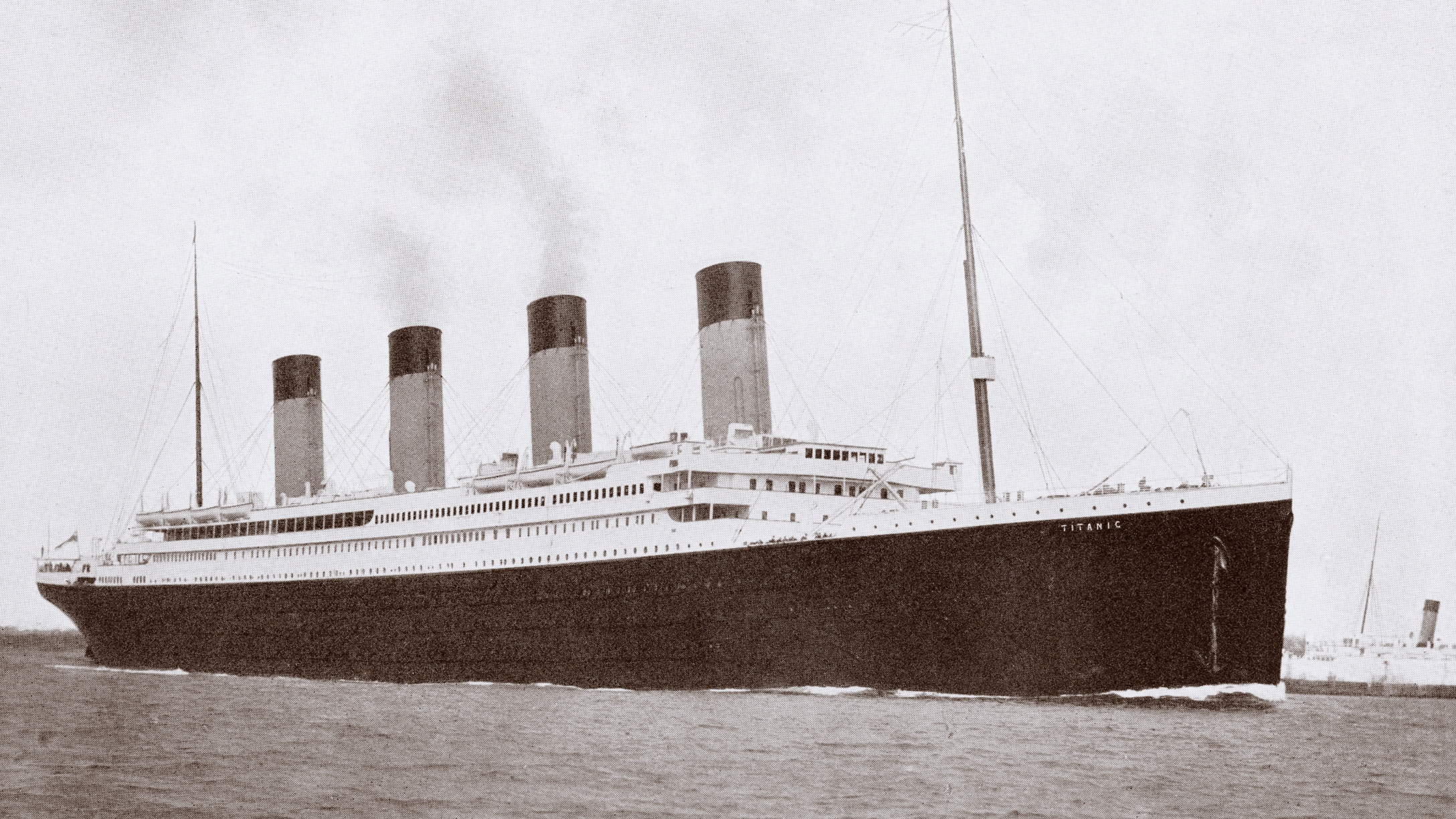
History is a funny thing>; it's often pretty interesting, and sometimes very disappointing, to see which stories are included and which stories are left out of the endless retellings that circulate following a huge event like the sinking of the RMS Titanic in 1912.
The ship set sail on a wave of good news and high expectations: 2,240 passengers and crew left the UK on April 10, 1912, eager to hit the shores of the United States only days later. The Titanic was celebrated as a construction marvel; it boasted 15 watertight bulkheads that earned the vessel a reputation for being unsinkable.
Unfortunately, it was exactly those bulkheads that would doom the ship when it swiped an iceberg in the late hours of April 14 — while the compartments were airtight, they allowed for water to spill over into the space between each bulkhead.
More from LittleThings: How A Polish Factory Worker Fooled The World Into Believing She Was A Romanov For 60 Years
Though many of us might think we know everything there is to know about the Titanic and its only trip, there are always new facts to learn.
There was at least one Black family on board the ship.
When the story of the RMS Titanic is told, it's often through the voices of white people. That makes sense; the vast majority of people on board were white. But there was at least one Black family on the ship: that of Joseph Philippe Lemercier Laroche, who was traveling with his wife and their two daughters.
Joseph was a native of Haiti and the nephew of its president, Dessalines M. Cincinnatus Leconte. He moved to France at the age of 15 to pursue a career in engineering and met his wife, Juliette Lafargue, at a market. The two married, and Joseph repeatedly found that the overwhelming racism in Europe meant he had a hard time finding a job. Joseph and Juliette decided to pack up and move with their two young daughters back to Haiti.
Joseph's family was thrilled, and they bought the family of four tickets on a French ship, La France. But Joseph and Juliette found out that the ship wouldn't allow them to room with their children, so they swapped those tickets for second-class passage on the Titanic.
Juliette wrote her father a letter and sent it when the ship docked in Ireland. She praised the ship and its accommodations:
"The arrangements could not be more comfortable. We have two bunks in our cabin, and the two babies sleep on a sofa that converts into a bed. One is at the head, the other at the bottom. A board put before them prevents them from falling. They’re as well, if not better, than in their beds.
"At the moment they are strolling on the enclosed deck with Joseph, Louise is in her pram, and Simonne is pushing her. They already have become acquainted with people we made the trip from Paris with a gentleman and his lady and their little boy too, who is the same age as Louise."
Of course, the family met the same fate that the rest of the passengers and crew did: On April 14, the "unsinkable" ship hit an iceberg, and chaos and tragedy ensued. Juliette later described the horrific events of the night, and how her family was ultimately torn apart:
"After the impact, the panic was terrible … people were pushing and shoving, we were completely surrounded … I could feel that someone had snatched my eldest daughter from my arms, my little Simone … I saw her being thrown into a lifeboat which was suspended above the abyss."
She continued, "My little girl, I cried, my little girl! … They've taken my little girl away! … But at the same moment, I also felt myself being grasped … hands were lifting me … I was hurtling towards the abyss … I found myself in the lifeboat, beside my little Simone."
Soon, Juliette caught a glimpse of Joseph as he struggled with their other daughter and the ship's crew:
"There, on the bridge, in the midst of the crush, I caught a glimpse of my husband, who, both arms outstretched above the crowd, was holding our younger daughter. He was trying to shield her from all the pushing … he was struggling with the crewmen, and was showing them the little girl, to try to convince them that she had been separated from me, her mother."
Juliette continued, "Finally, someone grasped my little Louise from my husband's arms, she would soon be in my own arms. … And the lifeboat moved down inexorably towards the sea. I hardly had time to shout a final farewell to my husband. I heard his voice, above the hubub, shouting to me: I'll see you soon, my darling! … There'll be room for everyone, go with the lifeboats, … Look after our little girls … See you soon!"
Juliette also believed she would be reunited with her husband, until the survivors found out the truth in New York:
"There were precious few people among the survivors who hadn't left behind a father, a brother or a husband on board the Titanic. When we asked for news from the crew of the Carpathia, they told us: Don't worry … other ships apart from this one have gone back to the Titanic and are making their way to New York, where you'll meet up with them all again. So the truth remained hidden from us until the end. It wasn't until we arrived in New York that we discovered the whole truth, in its dreadful reality."
Three of the dogs on board survived.
A lot of people forget that there were also pets on board the ship. First-class passengers were allowed to travel with their pets, and the ship had its very own kennel that was said to be among the very best.
Of all the dogs on board the ship, only three survived, and they managed to make it for a special reason: None of them were in the kennel at the time of the ship's sinking. The dogs were also small enough to be hidden in blankets or coats, which meant they could be snuck onto lifeboats by their owners.
According to the American Kennel Club, these are the surviving dogs:
"Lady: a Pomeranian purchased by Margaret Bechstein Hays, in Paris. Her owner took Lady, wrapped in a blanket, aboard Lifeboat 7.
"Sun Yat Sen: a Pekingese belonging to Myra and Henry S. Harper, publishing magnate. The couple and their dog were on Lifeboat 3. According to J. Joseph Edgette, a historian at Widener University and curator of a museum exhibit about the Titanic, Mr. Harper said, 'There seemed to be lots of room, and nobody made any objection.'
"Another Pomeranian: owned by Martin and Elizabeth Jane Rothschild. Mrs. Rothschild hid the dog until the following morning when those on Lifeboat 6 were rescued by the RMS Carpathia. The crew initially refused to take the dog on board, but Mrs. Rothschild insisted. Mr. Rothschild didn't survive the shipwreck."
J. Bruce Ismay wasn't actually a terrible person.
While plenty of people involved with the Titanic did actually turn out to be questionable, the owner of the ship, J. Bruce Ismay, has really gone down in history as a horrible person — but it turns out that portrayal isn't rooted in reality at all.
If you saw James Cameron's film Titanic, then you probably remember that Mr. Ismay was portrayed as being obsessed with getting the ship to the US as fast as possible, no matter the consequences. It turns out the real-life guy was a hero and reportedly helped save other passengers for over an hour before getting on the very last lifeboat himself.
Ismay's descendants have spent the 100-plus years since the ship's sinking trying to clear his name.
One relative told the BBC in 2012 that the press had a heavy hand in casting his ancestor as a villain:
"I think that he was treated really badly by the American press — and probably not quite so badly by the British press but his story was never really told — there were a lot of lies in the American press about him escaping on the first life boat and dressing up as a woman and things like that which must have deeply hurt him."
The ship's sinking truly traumatized Ismay, and his family insists he never recovered from the tragedy. In fact, the family couldn't even speak about the disaster to one another:
"My grandmother, after the disaster, would hardly speak about it and my mother didn't say a great deal either — what she did say was that it absolutely shattered his life."
Many people know there weren't enough lifeboats on board the Titanic to save everyone, but there's another odd fact about the lifeboats themselves: They had holes in the bottom that needed to be plugged up before they were launched. Unfortunately, not all of the lifeboats were plugged up.
Wallace Hartley's violin didn't go down with the ship.
If you've seen the 1997 film Titanic, then you probably remember one super-emotional scene: when Wallace Hartley plays "Nearer My God to Thee" as it becomes clear the ship is sinking and many people will not survive.
Most people likely assume the violin went down the the ship, right? Wallace Hartley himself died when the ship sank, so it's easy to assume he had his violin with him.
The violin itself surfaced in 2006 after a vendor approached researchers Alan and Andrew Aldridge and offered it for sale, claiming it was the violin played on the ship. When Hartley's body was recovered 10 days after the ship's sinking, no record was made of a violin or case being with him, which made researching the authenticity of the vendor's claim tricky.
Encyclopedia Titanic notes that the plot began to thicken when researchers set out out to solve the case: "Four newspapers (one in Halifax, Canada where the recovered bodies were taken ashore and three in England which were papers local to places associated with Hartley in Colne, Dewsbury and Leeds) had reported in early May that his body had been recovered with his 'music case' but did not give details as to its character or contents."
In July 1912, Hartley's fiancée, Maria Robinson, wrote a diary entry noting her "heartfelt thanks to all those concerned in the return of my late fiancé's violin." Robinson died in 1939, and her sister reportedly gave the violin to a Salvation Army bandmaster, who gave it to a member of his band.
Encyclopedia Titanic notes that the violin was not playable, but it appears to definitely have survived.




